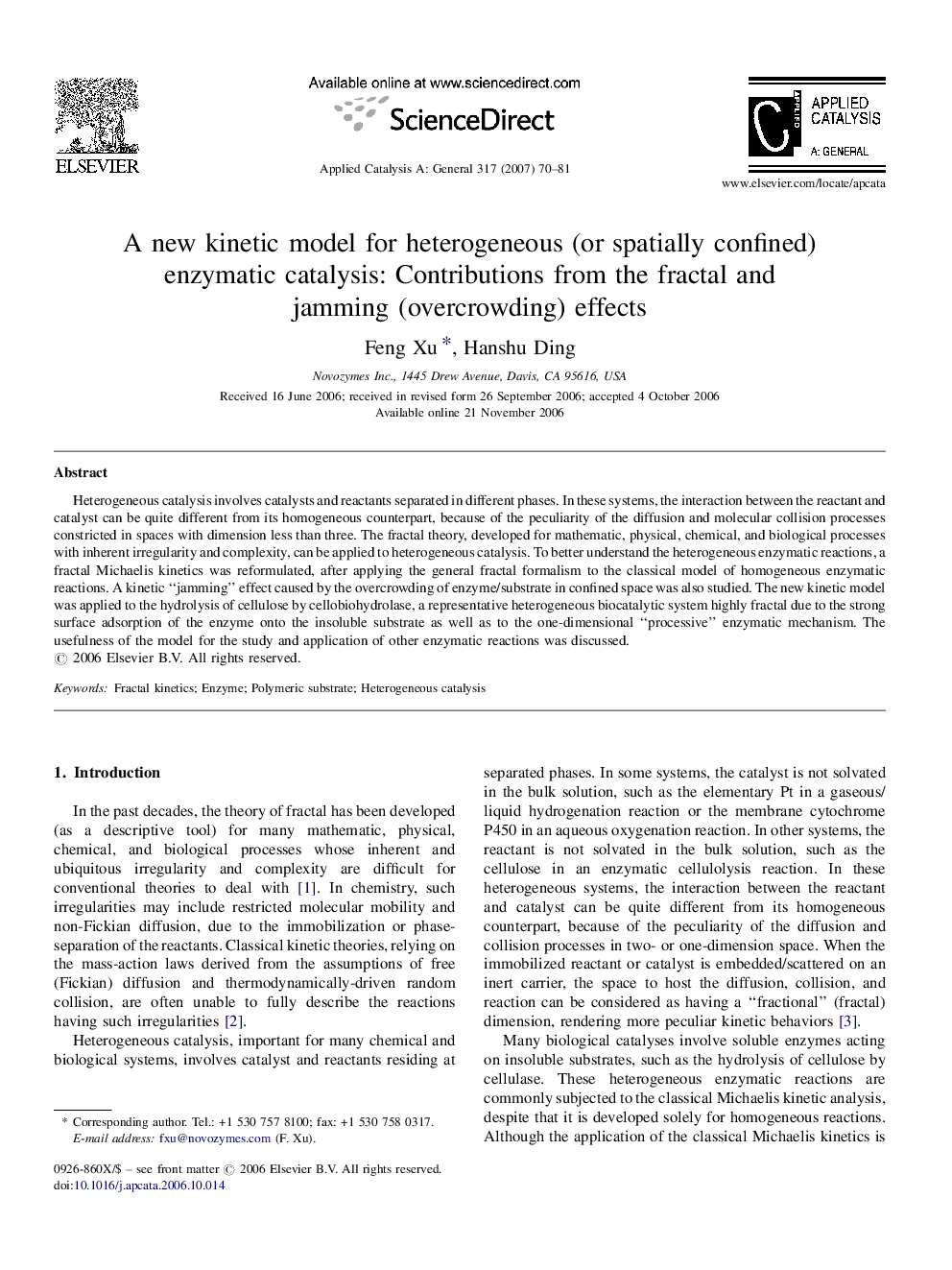| کد مقاله | کد نشریه | سال انتشار | مقاله انگلیسی | نسخه تمام متن |
|---|---|---|---|---|
| 44457 | 46030 | 2007 | 12 صفحه PDF | دانلود رایگان |

Heterogeneous catalysis involves catalysts and reactants separated in different phases. In these systems, the interaction between the reactant and catalyst can be quite different from its homogeneous counterpart, because of the peculiarity of the diffusion and molecular collision processes constricted in spaces with dimension less than three. The fractal theory, developed for mathematic, physical, chemical, and biological processes with inherent irregularity and complexity, can be applied to heterogeneous catalysis. To better understand the heterogeneous enzymatic reactions, a fractal Michaelis kinetics was reformulated, after applying the general fractal formalism to the classical model of homogeneous enzymatic reactions. A kinetic “jamming” effect caused by the overcrowding of enzyme/substrate in confined space was also studied. The new kinetic model was applied to the hydrolysis of cellulose by cellobiohydrolase, a representative heterogeneous biocatalytic system highly fractal due to the strong surface adsorption of the enzyme onto the insoluble substrate as well as to the one-dimensional “processive” enzymatic mechanism. The usefulness of the model for the study and application of other enzymatic reactions was discussed.
A fractal Michaelis kinetics was reformulated for heterogeneous enzymatic reactions, together with a kinetic “jamming” effect caused by the overcrowding in confined space. The new kinetic model was applied to the cellulose hydrolysis by cellobiohydrolase, a heterogeneous system highly fractal due to the strong surface adsorption of the enzyme onto the insoluble substrate and to the one-dimensional “processive” enzymatic mechanism. Figure optionsDownload as PowerPoint slide
Journal: Applied Catalysis A: General - Volume 317, Issue 1, 27 January 2007, Pages 70–81